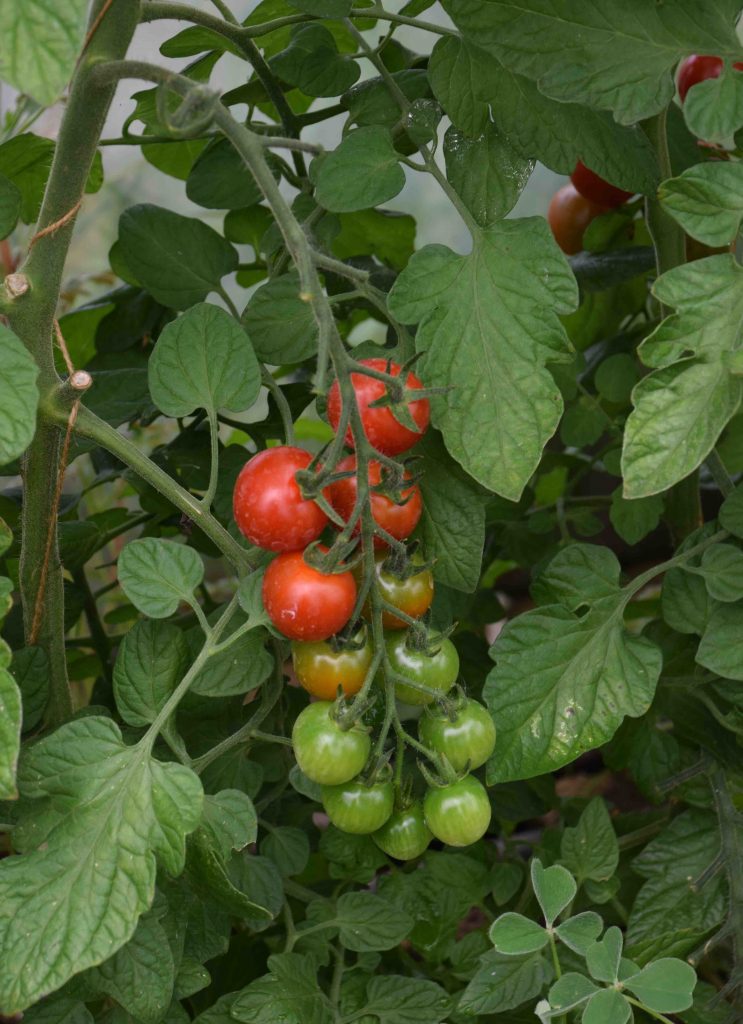
Last week I promised to tackle tomatoes and what to do to keep them healthy and productive. Everyone plants tomatoes at least once and they have the potential to be productive and delicious. But I can’t ignore the heat of this week and the ongoing drought conditions. You are quite aware of what is going on but I will deal with the issue after some timely tips on tomatoes, as promised.
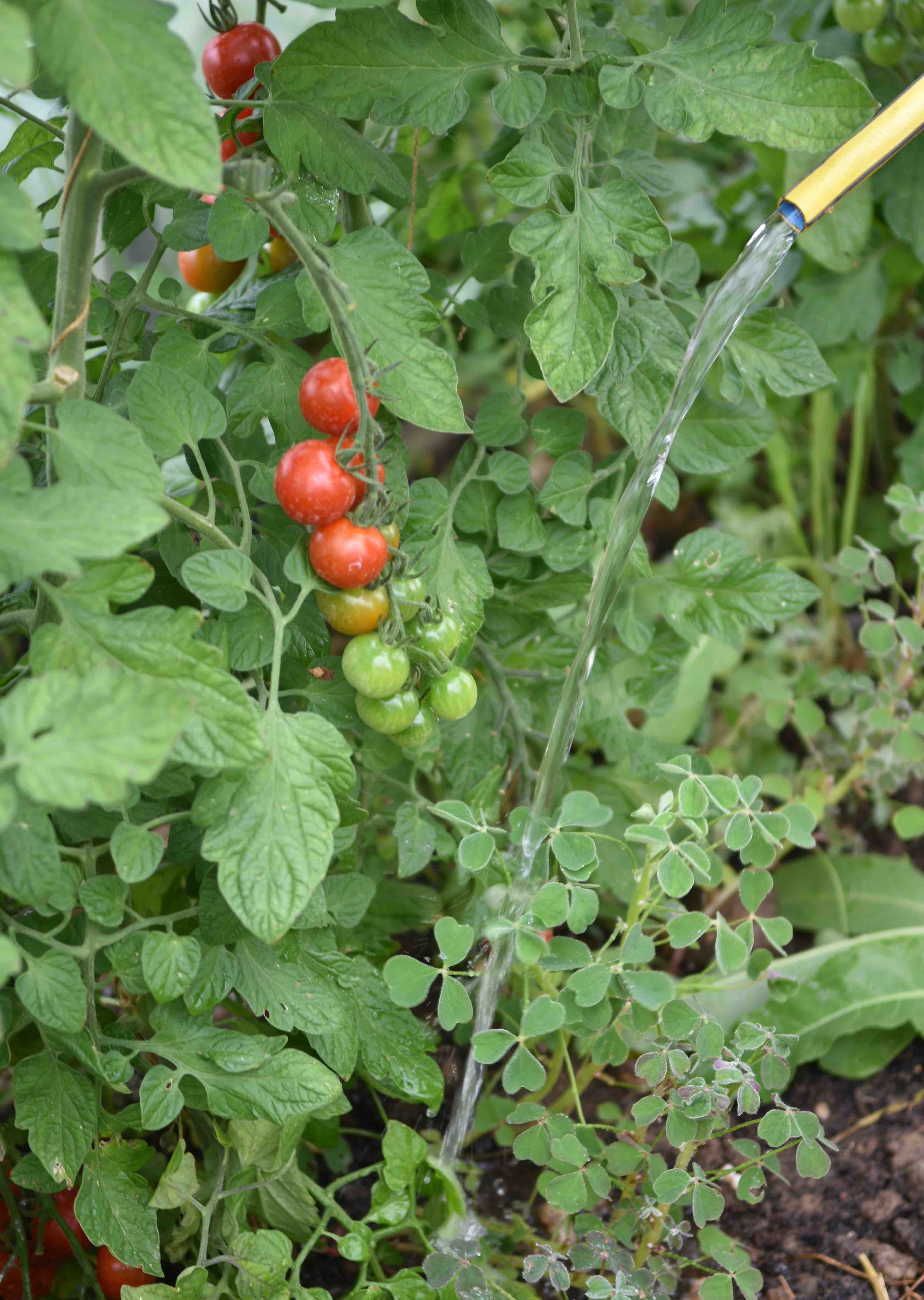
The key to healthy tomatoes is to keep them watered and fed. Tomatoes are easy to grow but there are a few, relatively common problems; these are blight, blossom-end rot and root diseases. Root diseases can kill the plants and tend only to occur if tomatoes are grown in the same spot every year. You can avoid them, in the greenhouse or outside, by changing the soil, growing the plants in a different spot every few years or by growing in pots or growing bags. Many people think you have to grow tomatoes in growing bags but they were developed by commercial growers who could then grow the crop in ‘fresh’ compost each year. They are fine but the plants have only limited root room and must be regularly watered – fine for a computer-controlled greenhouse but not so easy when you have six plants on the patio and ups are out at work.
Blight is the same disease that kills potatoes and is most common in thundery, wet weather when the humidity and high night temperatures allow the disease spores to grow on the plants. If you keep the foliage dry, the disease rarely strikes, hence we grow tomatoes in a greenhouse or poly tunnel.
And then there is blossom-end rot, which is often confused with blight. It is totally preventable but very common. It is not a disease but caused by a lack of water. Here is the science bit!
Most plant cells need calcium to form and this calcium is carried by water in the plant. If there is a lack of water, and the plant wilts, calcium does not reach the furthest tips of the plant. And the furthest tip of the plant, from the roots, is the very tip of the tomato fruit – the bottom of the fruit. So if this is short of calcium as it develops, the cells die and a black circle of dead tissue forms. The fruit looks fine otherwise and will even ripen, but you get this horrible, black, sunken area. If the plants only dried out once then only a few fruit are affected but if it happens every few days then a lot of the crop can be lost. In theory these fruits can be eaten if you cut off the damaged part but, to be honest, I never fancy them.
Because, at this time of year, plants are big and leafy, they can dry out quickly. Even if you soak them in the morning they can be wilting by the time you get back from work. I largely work from home but I prefer to grow tomatoes in soil, rather than pots, because this is far less likely to dry out. If you do use growing bags only put two plants in each or grow them in large pots. Stand these in saucers, in summer, so you can ‘overwater’ them in the morning. As long as they are not sitting in water by nightfall they will be fine in this weather.
Feeding is also essential because, not only are the plants ripening fruits but they are still growing. In fact they need more feeding now than earlier in the season. But feed more frequently rather than making a stronger solution, and only apply fertiliser when the compost or soil is moist or you can do more harm than good.
Some people believe that the flavour of tomatoes is better if the plants are kept fairly dry and stressed. I agree that the flavour may not be as good if the plants are force-fed nutrients and grown unnaturally, but flavour is affected by many factors including ripeness and variety. The risk of poor crops and blossom-end rot prevents me from treating my plants badly!
You need to control growth too and keep removing sideshoots as they appear.
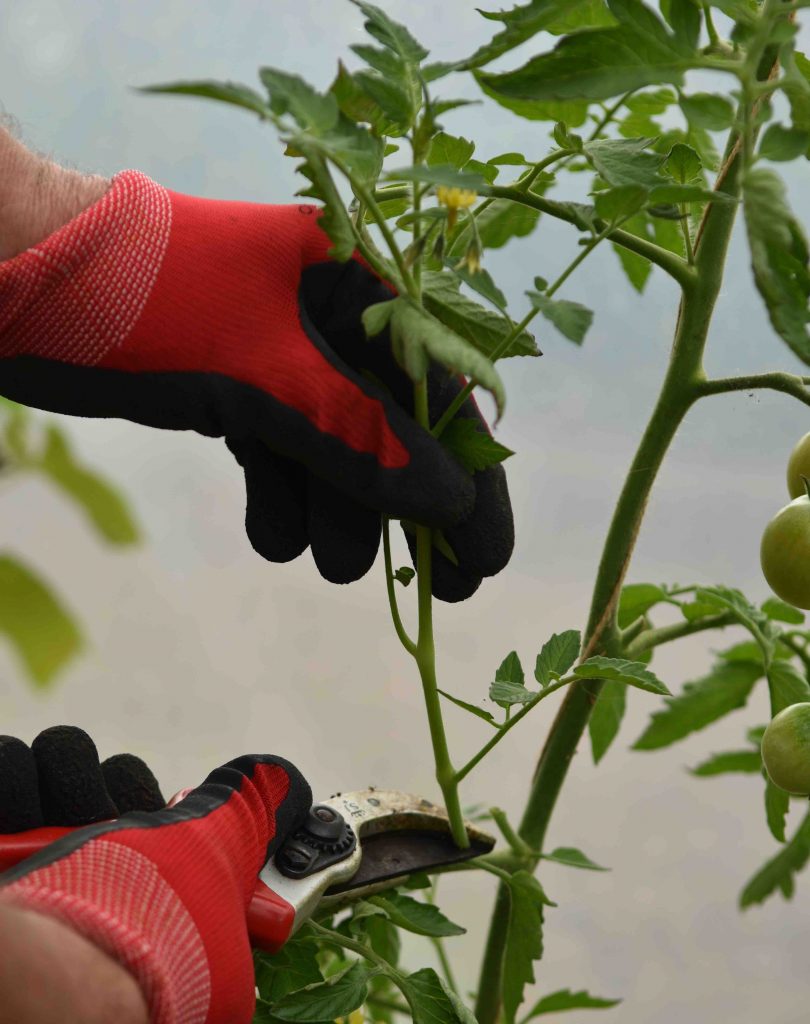
All this heat has meant that there has been no problem with the fruits ripening this year. It is warmth and not direct sun that causes the fruits to ripen. You can remove the lower leaves if they start to go yellow but do not remove healthy, green leaves to expose the fruits to direct sun. If you do, the fruits can get scalded and a common result is ‘greenback’ – an area of hard tissue at the ‘shoulder’ of the fruits that never ripens. It is more common on large-fruited varieties than cherry tomatoes.
But cherry tomatoes do have another problem, perhaps more than larger-fruiting kinds, and that is tough skins and skins splitting. It can be worse in hot weather and when the plants are dry because the skins toughen and ‘set’ and when the plants take up water again the fruit expands but the skin won’t let them – and they split. You will find they split when washed too, but that is not a problem. Try to water your plants evenly.
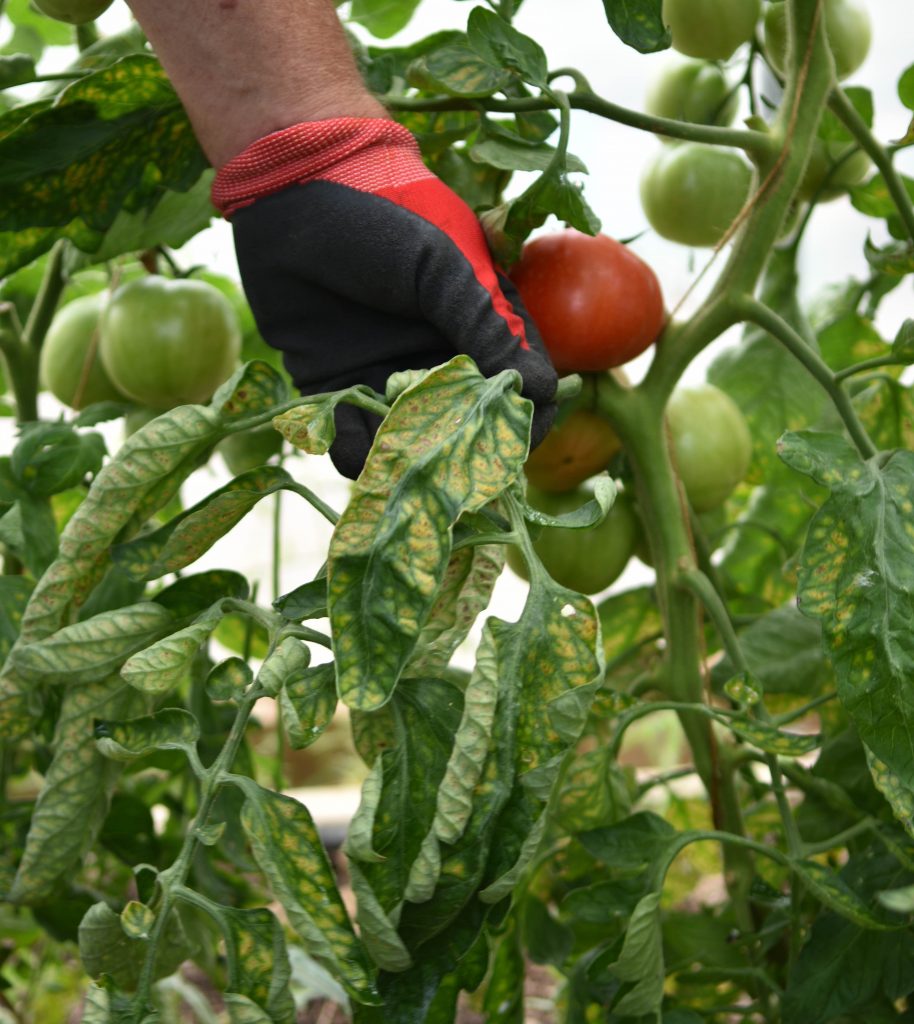
At the end of the season you can remove lower leaves, to allow better air circulation and reduce fungal problems, but that is not a job for now. Those leaves are feeding the plants and shading the fruit. I know some people strip off the lower leaves and it does make picking the lower fruit easier but it is not a good idea until the leaves start to turn yellow and have obviously outlived their usefulness.
We do need to think about taking the tips out of the plants though. Flowers that form now will just about be able to produce ripe tomatoes before the end of `September but otherwise, take out the tip of the plant after four to six trusses, depending on the vigour of the plants and if they are indoors or outside. Trim just above a leaf that is above the last truss, so the leaf can ‘pull’ up sap to the developing fruits.
Coping with drought
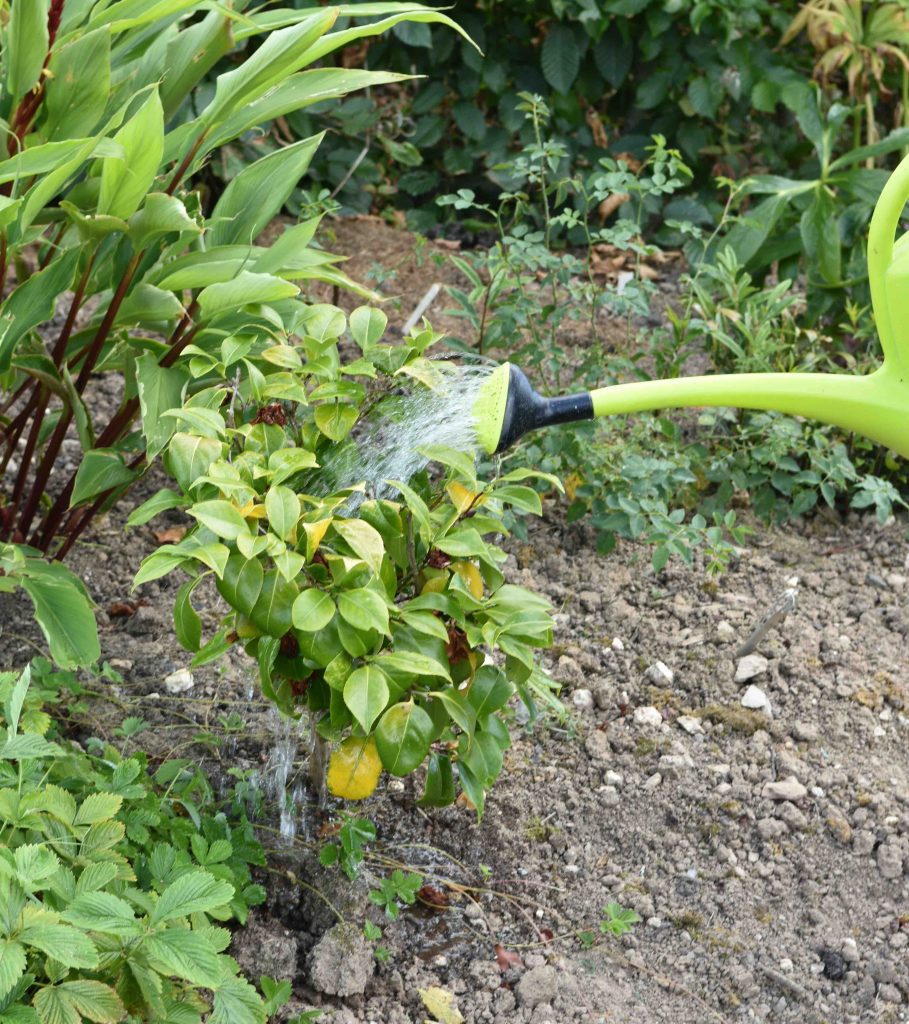
Just a few words about the garden in general in this weather. We can’t water everything and with hosepipes not a consideration we need to water only what really needs it. In the veg garden it is beans that benefit most from a bit of water. If they are dry they will not set pods. Potatoes also need water as the tubers swell but if they are watered and then dry out and then are watered again you get split and misshapen tubers so, unless you just have a few in pots, it is best to leave them alone and accept a crop of small tubers.
In the flower garden make sure you water your pots as often as you can. Most shrubs and perennials will survive even though they look awful now but try to give some water to camellias. Their flower buds, for next spring, are forming now and if they dry out now the tiny buds will die. When you do water, do so at dusk or early in the morning and give a good soak every week rather than a sprinkling every day. I water slowly so it soaks in rather than run over the surface, water something else and then go back and give a second watering so it goes nice and deep.
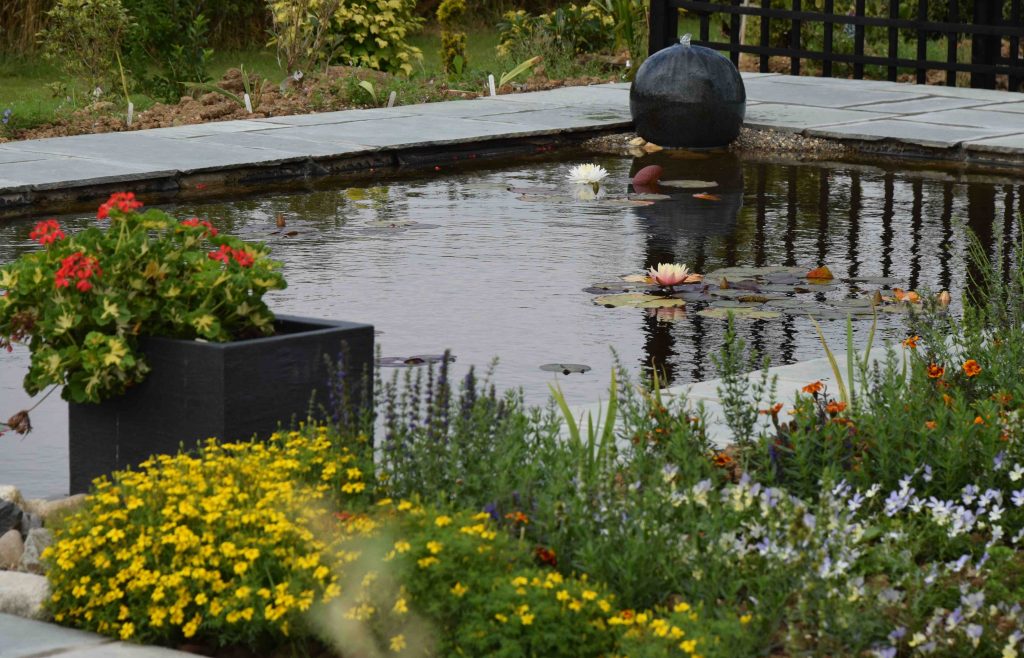
Ponds are a problem. In hot weather the oxygen levels in the water fall and this can harm fish, which will gulp for air at the water surface. If you run fountains and waterfalls you oxygenate the water but increase evaporation. So run them for limited periods only.
It is not ideal weather for much gardening – we can’t even mow the lawn. If you do mow, set the blades to maximum height so you only remove those long, flowering stems and weed flower stems. But we can install a water butt. It will make life much easier next time it is dry and you can bet that as soon as you do, it will rain for a month and you won’t need it! What more reason do you need!